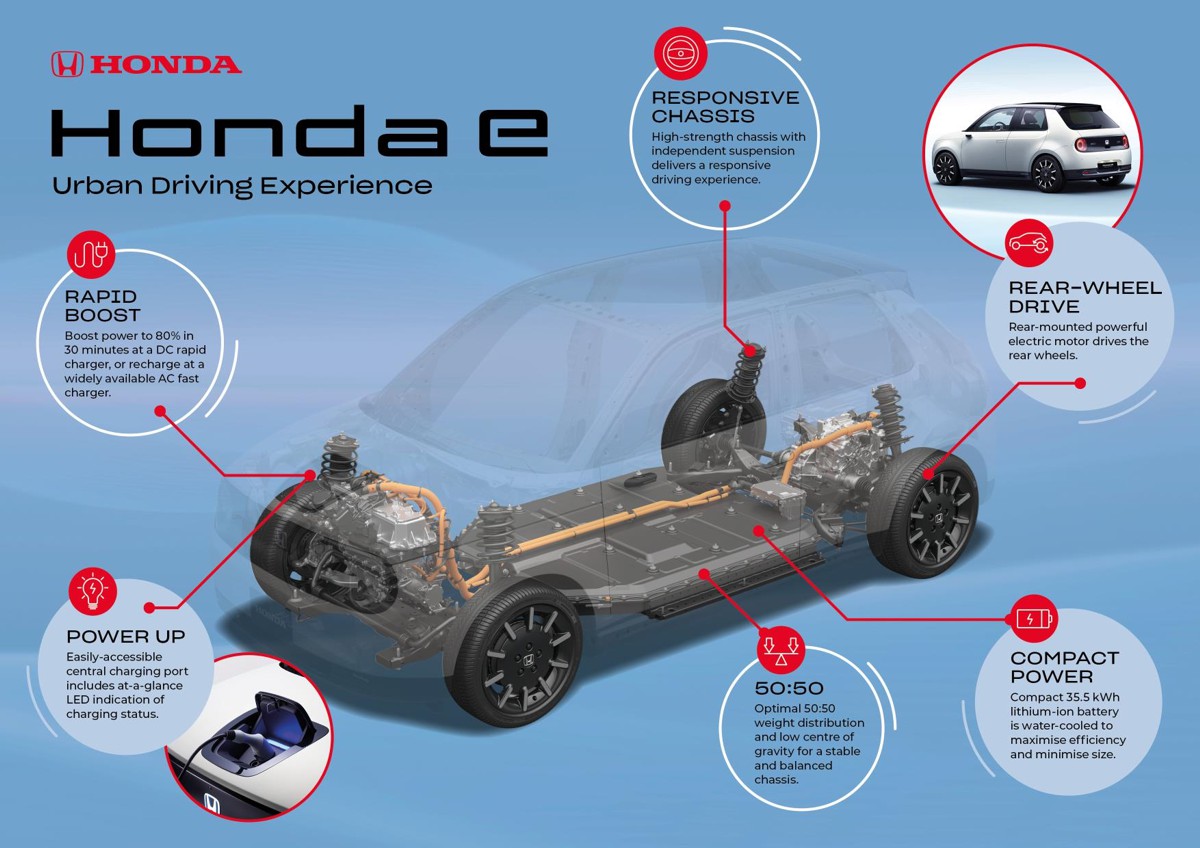Honda e platform chassis and battery details unveiled
Honda has announced the details of the chassis, battery and charging details for the highly anticipated Honda e compact electric car. Designed from the ground up, the Honda e is the first Honda to be built on a dedicated EV platform. The car will feature a water-cooled 35.5 kWh Lithium-ion high-capacity battery that can be charged using either Type 2 AC connection or a CCS2 DC rapid charge with at-a-glance LED indication of charging status.
Phil Webb, head of car at Honda UK, commented: “Confirmation of the chassis, platform, battery and charging details of the Honda e marks a key milestone in our preparations to unveil the final production version of the model later this year. I’m looking forward to seeing the Honda e Prototype in action for the first time in the UK at the Goodwood Festival of Speed next month.”
Chassis and platform
To offer a rewarding responsive driving experience, the Honda e platform has been developed with a specific focus on urban environments. With the battery positioned centrally at a low level within the wheelbase under the floor of the car, the result is a 50:50 weight distribution, a low centre of gravity for optimal handling and stability as well as excellent Honda driving dynamics. Power from the high-torque electric motor is delivered through the rear wheels enabling steering precision even at high acceleration.
The platform offers a combination of ride comfort and agility. The four-wheel independent suspension is engineered to offer outstanding stability in all conditions, a smooth ride and responsive handling. Elements of the suspension components are forged aluminium to reduce weight and benefit performance and efficiency.
When combined with its compact size and short overhang, the Honda e delivers next-generation small car agility to make city driving enjoyable and tight manoeuvres in urban environments effortless.
Battery and charging
The reliable 35.5 kWh Lithium-ion high-capacity battery can be charged using either Type 2 AC connection or a CCS2 DC rapid charger. With a full range of over 125 miles, the fast-charge capability will deliver exceptional usability to meet the demands of everyday commuting providing 80% charge in 30 minutes.
Designed with a focus on simplicity and usability, the Honda e charging port is integrated into the bonnet, with LED lighting visible through a glass panel to illuminate the port for the driver and highlight the battery charging status. The central positioning of the charging port allows easy access from the front of the car or from either side. Displays on the dual touchscreens inside the car present the current level of battery charge, while a drivetrain graphic charts the current power flow and the regeneration and recharging status.
The battery pack is water-cooled to maintain an optimum thermal state, therefore maximising the efficiency of the battery and charge state, while also ensuring its size and weight are minimised so that it does not compromise cabin room.
Honda’s new compact electric car is a key part of the brand’s latest electrification commitment to feature electrified technology in 100% of its European sales by 2025. Presented in prototype form at the 2019 Geneva Motor Show, the first Honda production battery electric vehicle for the European market will make its mass production debut later this year.
Honda has already received 31,000 expressions of interest across Europe with over 9,000 coming from the UK.





















